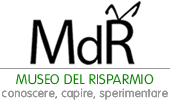
Raising a child is one of the most motivating experiences for a family, but also one of the most demanding from an economic point of view. In a context where families have to face increasingly high expenses, being informed and planning becomes essential to tackle this challenge with greater peace of mind.
How much does it really cost and what are the most important expenses?
According to a recent analysis by Federconsumatori, maintaining a child in their first year of life can cost between €7,400 and €17,500. Extending the horizon to 18 years, the total expense can exceed €175,000, with peaks over €320,000 for families with higher incomes.
The most significant expense items include:
- Food and care (diapers, milk, hygiene products)
- Clothing (which must be renewed often)
- Education (school supplies, transport, tuition or cafeteria fees)
- Extracurricular activities (sports, languages, music)
- Childcare (nursery, babysitter, after-school programs)
How to best manage this phase: 4 practical tips
Although these numbers may seem discouraging, good organization can truly make a difference. Here are some useful tips:
- Draw up a monthly family budget to keep track of income and expenses
- Create a savings fund for unexpected or future costs (e.g., school, sports, trips)
- Make conscious purchases, considering offers, used or shared products
- Plan ahead for major school or medical expenses
It is also important to begin involving children early in discussions about the value of money: explain where the family’s resources come from, what the priorities are, and how to make conscious choices. This type of education strengthens their sense of responsibility and helps young people build a healthy relationship with money from an early age.
Bonuses, saving, and education: tools to support families
While mastering daily financial management is important, we recommend that families keep an eye on available bonuses and benefits, from the universal child allowance to nursery bonuses and tax deductions. These tools help to concretely lighten the financial burden and make raising a child more sustainable, especially for families within certain ISEE income brackets or in more fragile economic conditions. Being informed about the requirements and how to apply is fundamental to understand if you are entitled to these measures and how to request them properly.
Financial education also plays a key role: a good foundation in this area is essential for making rational decisions, learning to manage savings, and handling money properly. Furthermore, it helps us gain knowledge and skills that can be passed on to children from an early age. The Museum of Saving offers educational programs for children and families precisely for this purpose.
Raising a child certainly requires a significant investment, but with informed choices, appropriate tools, and the support of targeted public policies, it is possible to approach this experience with greater peace of mind. To explore these and other topics related to conscious family financial management, continue to follow the Museum of Saving’s blog and visit the website www.museodelrisparmio.it.
May 21, 2025
